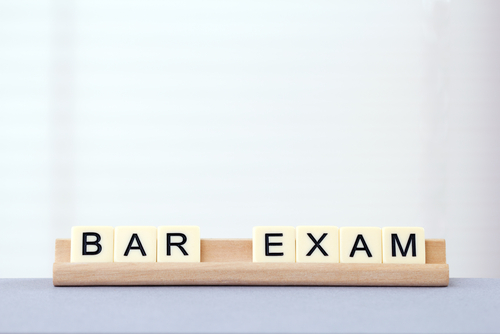How did some law schools increase first-time pass rates by at least 10 points in 2017?

Shutterstock.com.
A year after offering a three-credit, graded multistate bar exam course, which includes videos created by professors that students watch before class, Campbell University School of Law saw a greater than 13-point increase in the pass rate for first-time test-takers in North Carolina in July 2017.
“I don’t think you can just rely on traditional curriculum to do it. You’re going to have to pick up some additional strategies to get these kids across the finish line, ” says Judge J. Rich Leonard, a former U.S. district court bankruptcy judge and current law school dean at Campbell.
The first-time pass rate for Campbell in July 2017 was 83.33, compared to 70 percent in July 2016. Based on information from states that release law schools’ individual bar exam pass rates, at least eight schools saw first-time pass increases of 10 points or greater between the July 2016 and July 2017 bar exams.
At some of these schools, including Campbell, cut lines for LSAT scores and undergraduate GPAs were lower for the class that took the bar for the first time in July 2017, compared to the first-time test taker class in the July 2016 bar.
At Mercer University School of Law in Georgia, its July 2017 pass rate for first-time test takers was 82.4 percent—up from 67.7 percent in July 2016.
“When I say that, I have to start coughing,” says Cathy Cox, the school’s dean. She attributes the rise largely to students “having a real healthy level of the fear of God,” following last year’s bar results.
Also, for the class of 2017, students with grade-point averages below 80 percent were required to take a for-credit bar preparation course.
“Over 90 percent of the class took it anyway, even though it wasn’t mandated for many of them,” Cox says.
The rule was later changed, and now third-year students with GPAs below 86 percent are required to take the class. Additionally, the law school has decreased class sizes for its first-year section.
“Few classes that the students take are over 25 or 30 students. We felt like giving them closer interaction with faculty, and putting faculty in a better position to do more writing assignments, would give the students a better education,” says Cox, a former Georgia secretary of state and House of Representatives member who was appointed as the school’s dean in July.
“It would be a lot more cost effective to pile them into a large section, like when I was here,” says Cox, a 1986 Mercer graduate. “But if you really want to teach writing, you just can’t do that well in a large class.”
At Oklahoma City University School of Law, its first time-bar pass rate for July 2017 was 77 percent, compared to 67 percent in July 2016. Like a few other states, Oklahoma recently changed how it grades bar exams. However, that was in March 2016, when the state supreme court vacated a scaling model on the test’s essay portion, the Tulsa World reported.
Lee Peoples, OCU Law’s interim dean, attributes the pass rate increase to a year-long, for-credit course on advanced bar studies. The class is meant to be a reinforcement, not a substitute, to bar prep courses.
“The more you go over something and deal with it, the better chance you have of mastering it,” says Peoples, adding that law schools’ offerings to help students pass the bar have significantly increased since he graduated from the University of Oklahoma College of Law in 2000.
And while the offerings cost more, the good news is that it seems that more students can pass the bar the first time out if they participate in all their schools’ offerings.
“We did it first on faith and a prayer, hoping it would work,” Leonard says. “Our students who took it think it worked.”



